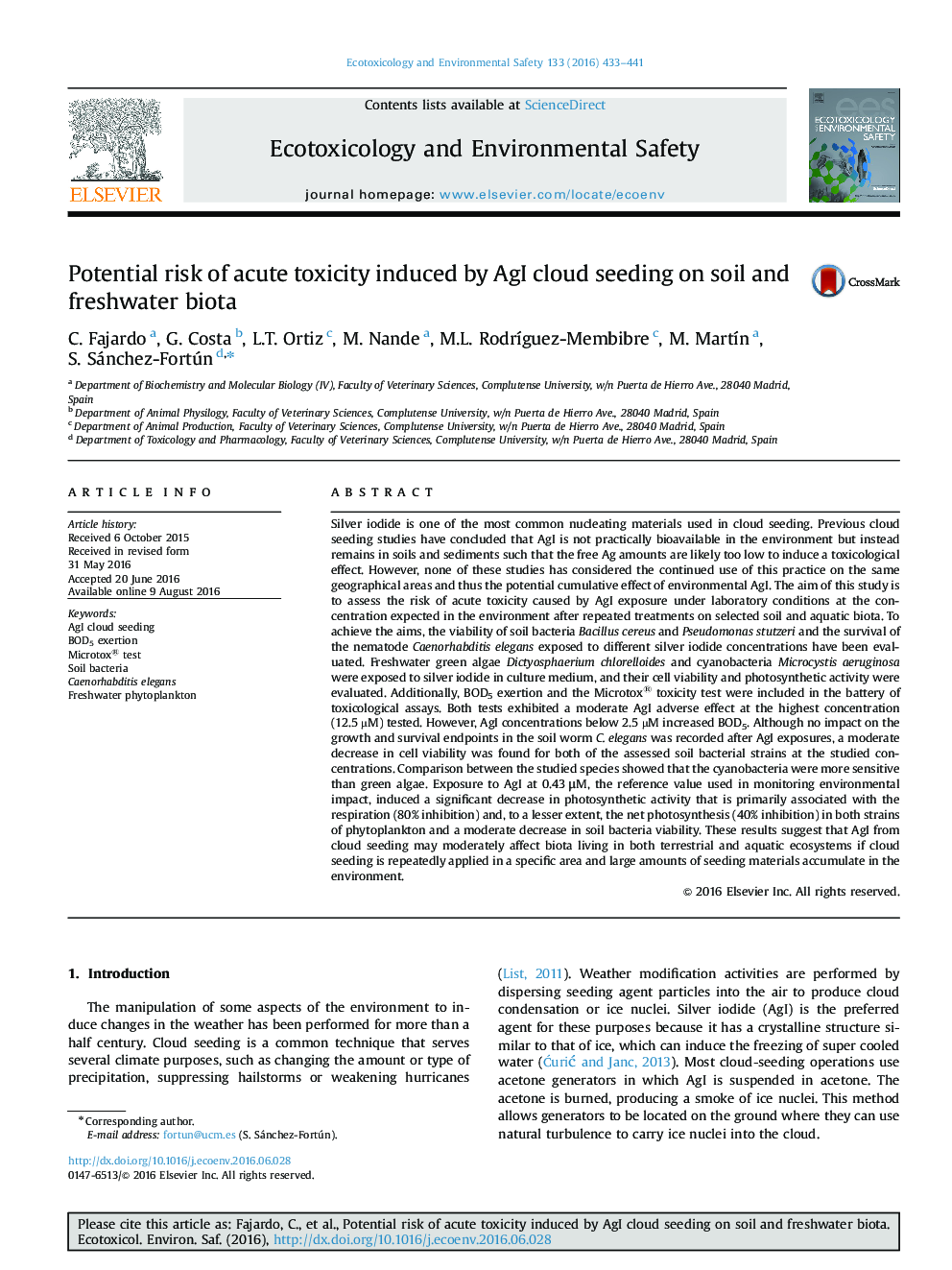| کد مقاله | کد نشریه | سال انتشار | مقاله انگلیسی | نسخه تمام متن |
|---|---|---|---|---|
| 4419025 | 1618930 | 2016 | 9 صفحه PDF | دانلود رایگان |

• A set of toxicological tests were used to assess the effects of AgI.
• AgI exerted no impact on growth and survival endpoints in the soil worm C. elegans.
• After AgI exposure a decrease in cell viability was found for soil bacteria.
• Freshwater organisms were more sensitive than soil organisms to AgI.
• A cumulative effect of AgI may affect terrestrial and aquatic biota.
Silver iodide is one of the most common nucleating materials used in cloud seeding. Previous cloud seeding studies have concluded that AgI is not practically bioavailable in the environment but instead remains in soils and sediments such that the free Ag amounts are likely too low to induce a toxicological effect. However, none of these studies has considered the continued use of this practice on the same geographical areas and thus the potential cumulative effect of environmental AgI. The aim of this study is to assess the risk of acute toxicity caused by AgI exposure under laboratory conditions at the concentration expected in the environment after repeated treatments on selected soil and aquatic biota. To achieve the aims, the viability of soil bacteria Bacillus cereus and Pseudomonas stutzeri and the survival of the nematode Caenorhabditis elegans exposed to different silver iodide concentrations have been evaluated. Freshwater green algae Dictyosphaerium chlorelloides and cyanobacteria Microcystis aeruginosa were exposed to silver iodide in culture medium, and their cell viability and photosynthetic activity were evaluated. Additionally, BOD5 exertion and the Microtox® toxicity test were included in the battery of toxicological assays. Both tests exhibited a moderate AgI adverse effect at the highest concentration (12.5 µM) tested. However, AgI concentrations below 2.5 µM increased BOD5. Although no impact on the growth and survival endpoints in the soil worm C. elegans was recorded after AgI exposures, a moderate decrease in cell viability was found for both of the assessed soil bacterial strains at the studied concentrations. Comparison between the studied species showed that the cyanobacteria were more sensitive than green algae. Exposure to AgI at 0.43 μM, the reference value used in monitoring environmental impact, induced a significant decrease in photosynthetic activity that is primarily associated with the respiration (80% inhibition) and, to a lesser extent, the net photosynthesis (40% inhibition) in both strains of phytoplankton and a moderate decrease in soil bacteria viability. These results suggest that AgI from cloud seeding may moderately affect biota living in both terrestrial and aquatic ecosystems if cloud seeding is repeatedly applied in a specific area and large amounts of seeding materials accumulate in the environment.
Journal: Ecotoxicology and Environmental Safety - Volume 133, November 2016, Pages 433–441